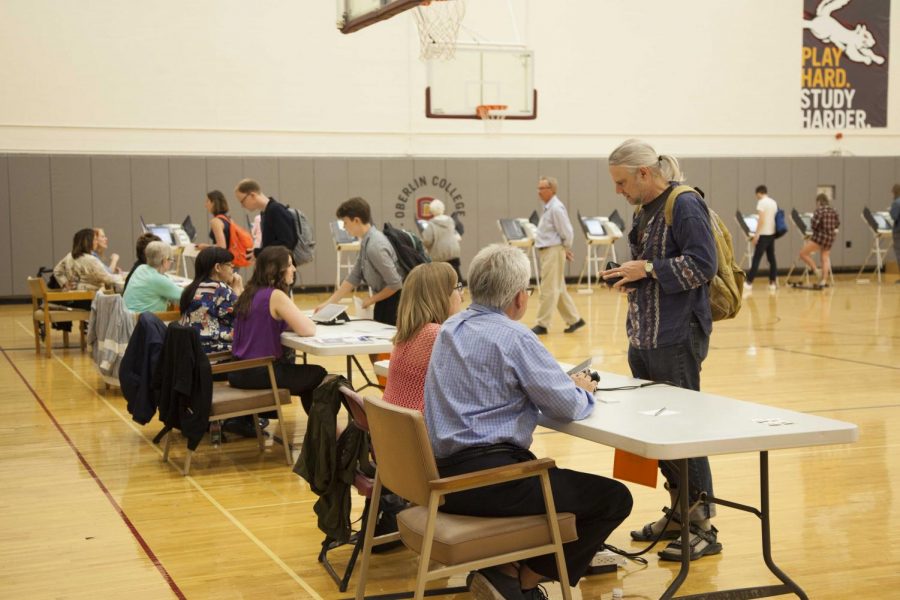Issue 1, Joe Miller Sweep on Election Day
A community member picks up their ballot at Tuesday’s primary election in Philips gym.
As the Ohio primary polls closed Tuesday evening, overall pivoting in numbers toward Republican candidates across the state, Oberlin’s District 56 came away with Rob Weber as the uncontested Republican state candidate and Joe Miller as the narrow winner among four Democratic state representative candidates. The ballot also showed that Issue 1, Ohio’s popularly discussed anti-gerrymandering bill, passed with a huge 75 percent approval.
Miller’s platform focuses on addressing issues ranging from jobs, education, and healthcare to the environment, diversity, and business. Miller believes that successfully revitalizing the local education system will require a statewide change in legislation.
“Education empowers the masses, and our children do not deserve to have their education politicized or profiteered by the lobbyists in Columbus,” Miller said in a public statement. “I will support legislation that empowers local public schools to prepare our children to be 20th-century learners by creating citizens who are strong in both mind and body by fostering their intellectual, athletic, and social development.”
Despite having fallen short of Miller, Olaes garnered the third-most votes — totaling 2,146 — among the four Democratic candidates running for office after having taken an entire semester off to pursue her political passion and make a difference in the local community. Olaes did not respond to the Review’s request for comment at the time of this publication.
Sherrod Brown, Ohio’s longtime Democratic senator, ran unopposed on the Democratic ticket for the U.S. Senate. Jim Renacci won the Republican nomination for the Ohio Senate after receiving support from President Trump during a visit to Cleveland on Saturday.
“We need his vote very badly,” Trump said at a rally held for Renacci. “He’ll be fantastic. I’ve known him for a long time.”
The aforementioned Issue 1 called for the reform of partisan gerrymandering, which will protect the map-drawing of congressional districts in Ohio from benefiting a single political party.
“Issue 1 means an end to our current hyper-partisan process for drawing congressional districts where politicians rig elections to keep themselves in power,” said League of Women Voters of Ohio Co-President Mary Kirtz Van Nortwick in a public statement. “We can now move toward creating fair districts where citizens’ voices are heard.”
Ever since 2012, the political party designations in each of Ohio’s 16 congressional districts have remained the same. But in light of Issue 1’s passing, public hearings and map-drawing proposals will be mandated to prevent gerrymandering. One potential downside of Issue 1, however, is the possibility of having to redraw districts every four years. While Issue 1 has officially been added as an amendment to Ohio’s constitution, the bill will not be implemented until after the 2020 census.
The Republican and Democratic candidates will square off for November’s general election, which will decide the fate of the U.S.’ Republican-majority House and Senate.







